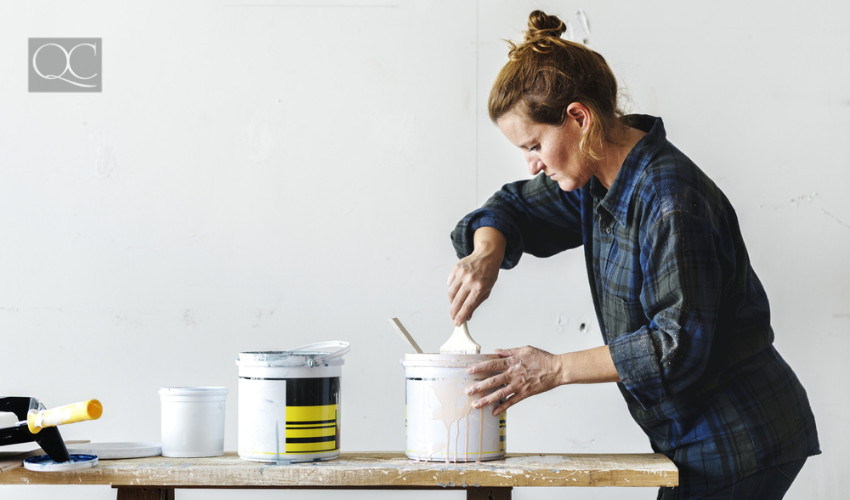When you’re first looking into interior decorating courses, chances are, you’re looking for key words like “color theory”, “textile design”, and “understanding floorplans”. Mastering design elements is going to be your bread and butter as you enter the next chapter of your life, but you’ll be learning a lot more in your course than just decorating concepts.
When you finally become a certified interior decorator, you’ll likely spend the first couple of years being your own boss and your own employee. In such a competitive industry, becoming savvy in your business acumen and client relations on top of having an ambitious attitude is absolutely necessary. Some people are naturally talented at this, but most people can learn it through enough study and practice.
Here are some lessons that you can expect to learn in your interior decorating courses to ensure you meet your job requirements while gaining a competitive edge!
1. Designing iron-clad contracts

When you finally start taking jobs, you need to make sure you have contracts that detail your service agreement with your client. These contracts not only ensure that everyone knows the extent of what you’ll be doing, but are also your first line of defense if anything goes wrong. Liability clauses are a given, but what else should you be including? Most articles detailing how to draw up a work contract are too vague. You need to learn how to tailor a contract to the scope of your job! You really can’t afford to have a vaguely worded contract even right at the start—making sure you have the knowledge to design great contracts is your best defense against nasty clients!
2. Catering to preferences and interests that aren’t your own
It’s hard not to see a space and want to decorate it to suit your own style, but you have to nip those thoughts in the bud! Being empathetic to your client’s wishes is necessary – after all, it’s their home! However, you don’t want to just go along with what they want, either. Why spend hundreds of dollars on tuition if you aren’t going to trust your own judgement and expertise? Your decorating course will train you to use your client’s home space, vision, and your expertise to create a living space that they’ll want to return to every single day!
3. Navigating an emotional client
One of the strangest situations you’ll encounter is a client who hires you to decorate their home, and then shoots down all your ideas! Navigating a closed-minded client is difficult. To get to the bottom of this, you’ll need to understand that your client’s home is a precious space with lots of emotional attachments. You’ll learn how to be professional and assertive, while being non-intrusive and considerate. It sounds like the ultimate balancing act: difficult, but not impossible. With good training, you’ll learn just how to tip-toe that fine line and walk away with a great recommendation from your client!

4. Thinking on your feet
Ideally, you’ll work with your client on the project plans until everything is in place, but you can’t always anticipate unforeseen circumstances. For example, your client is doing renovations and in order to achieve their vision, they now have to add in an extra structural beam that you must decorate around. Some quick thinking on your end is needed to save your client’s money, but you still have to make sure that all ideas are run past your client. The good news is that adapting to change is a skill that you will get better at as you progress through your career!
5. Selling yourself
This is one of those things that is easier said than done. While you can definitely achieve great success with an interior decorating certification in hand, you still have to work hard to get your career where you want it to be. How can you sell yourself as the go-to decorator if five other professionals in your area also have their certifications? A good course will consider the fact that many interior decorators are self-employed. They should delve into the basics of marketing and how to sell your services against the DIY ethos common today.

6. Overcoming a slump
Your course will prepare you to draw up a business plan that will outline short-term and long-term goals. But no matter how many safeguards you have in place, you will encounter a slump at some point—and it’s perfectly normal! The key is knowing how to bounce back from one. Just because business is slow doesn’t mean that you should sit there and wait until things pick back up again. You have to make your own business! That means knowing exactly how to design a portfolio, update your social media, build your network, and seek out new opportunities. It sounds overwhelming, but your course will take you through it all—one step at a time!

7. Doing a consultation
Consultations on home renovation TV programs tend to be short and sweet, and only involve a tablet blueprint and firm handshake to close the deal. While it’s important to note how the experts relax their clients and propose solutions to problems, there’s a lot more to it than just charisma! Did you know that it’s standard procedure to complete a consultation report within 48 hours of the walk-through? This way, you can make sure that your clients’ interests, property specifications, and ideas are written down for all parties. Failing to do so results in a lack of focus when starting on the actual project. Your course should prepare you to set up the proper foundations to begin a contract.
What lessons learned from your interior decorating course are worth repeating? Let us know!


